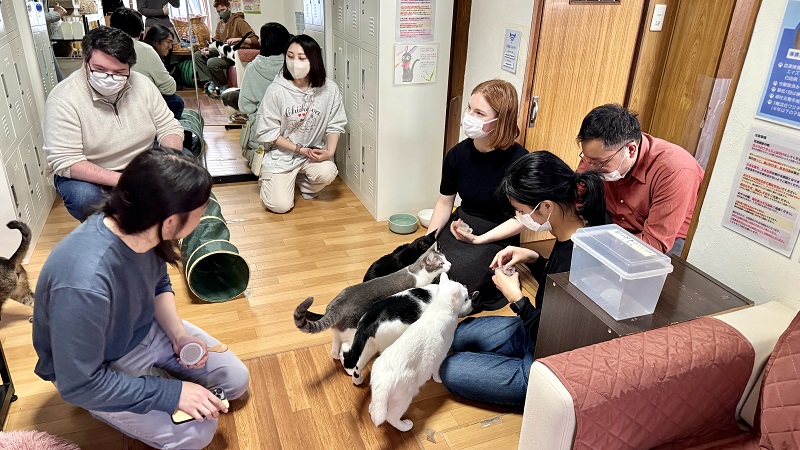Photos by Yuna Guu (ArtCenter College of Design), Student Correspondent for AICAD in Japan, Spring 2024
Osaka Aquarium Kaiyukan


During one of our weekends, I went with a few friends I made in the program to the Osaka Aquarium Kaiyukan. It’s located near the port of Osaka, and one of the largest aquariums in the world. Here, you can see whale sharks and other marine life from all over the world.
Weekend Trips with Friends


For all the students concerned about the academic program being too intensive and being restricted to only Osaka—worry not! We had a long weekend, so a friend and I planned a trip to Hiroshima. There, we visited Itsukushima and the famous orange Great Torii Gate, which is just offshore. While there, we decided to travel further and go to Okunoshima, also known as Rabbit Island. I highly recommend saving up for both places over any long weekends and breaks!
Rescue Cat Café

In a CET-hosted event, students visited a rescue cat café named Cat Space located in Osaka. The café itself is just a five-minute walk from the Tenjimbashisuji Rokuchome Station, which is half an hour from Osaka Gakuin University by train. Each person was given cat food by the store owner, and we spent our time there playing around with the rescue cats!
Dancing, Singing, and Eating

For one of our classes, our teacher took us back to the same store in his hometown to try our hand at Nihon-buyō (日本舞踊)! Nihon-buyō is the Japanese classical performing arts of dance. The store owner prepared and helped dress each of us in traditional Japanese wear, the kimono. We were also provided fans for the dance.


After getting dressed, we practiced singing the song we were going to dance to—Sakura Sakura. Sakura Sakura is a Japanese folk song depicting spring, which I thought was rather fitting considering that the sakura (cherry blossom) season is just around the corner. The Nihon-buyō teacher explained the meaning of the lyrics as we sang.
After singing, it was finally time to learn the dance! We learned how to use our fans and followed the teacher as she explained the meaning of each movement in the dance itself. It was hard, but we began to get the hang of it after a few tries!

After repeatedly practicing the dance, the store owner treated us to wagashi, Japanese traditional sweets, and a cup of bancha, a Japanese green tea. Our dance teacher shared her story with us as we enjoyed the end of a meaningful experience. To our surprise, we were also given the kimonos as a present!